December 2023
More than 100 rivers and canals flow beneath Tokyo.
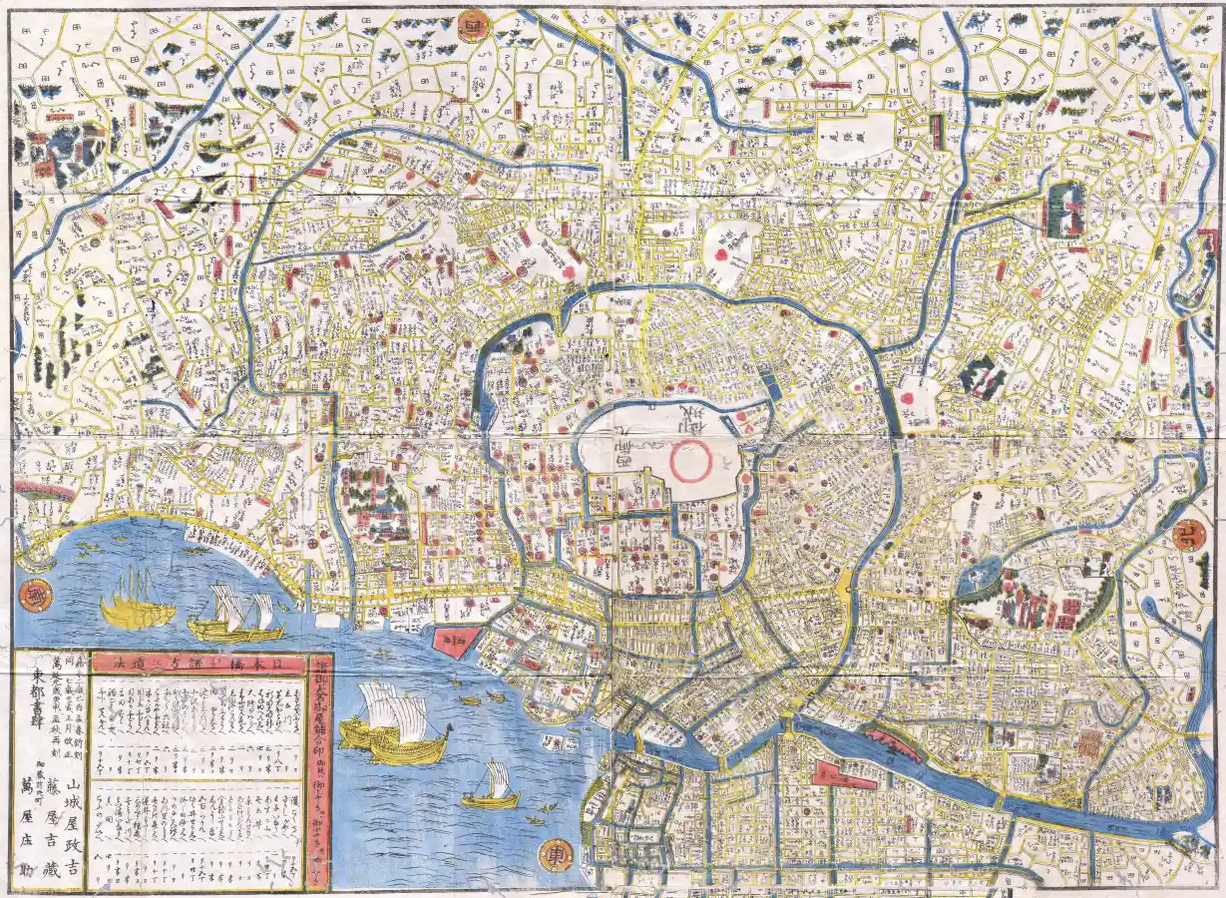
1849 map of Tokyo
According to the Government of Japan in 2015: “The Sumida River, though only 23.5 kilometers (about 15 miles) long, flows through a densely populated area of central Tokyo, with about 3 million people living in its basin, and it is one of the capital’s most famous waterways. Until around the mid-twentieth century, it was the habitat for fish and other aquatic life, and people gathered on its banks for recreation. But as a result of urban development during the rapid-growth years of the 1950s and 1960s, it became polluted and ceased to be an attraction.”
The Sumida is one of Tokyo’s major rivers. It branches off from the Arakawa River and flows through the city for a distance of 16 miles, eventually dumping into Tokyo Bay.
During the Edo period (1603 – 1868), the river was a major part of Tokyo life and can be seen in much of the art from the period.
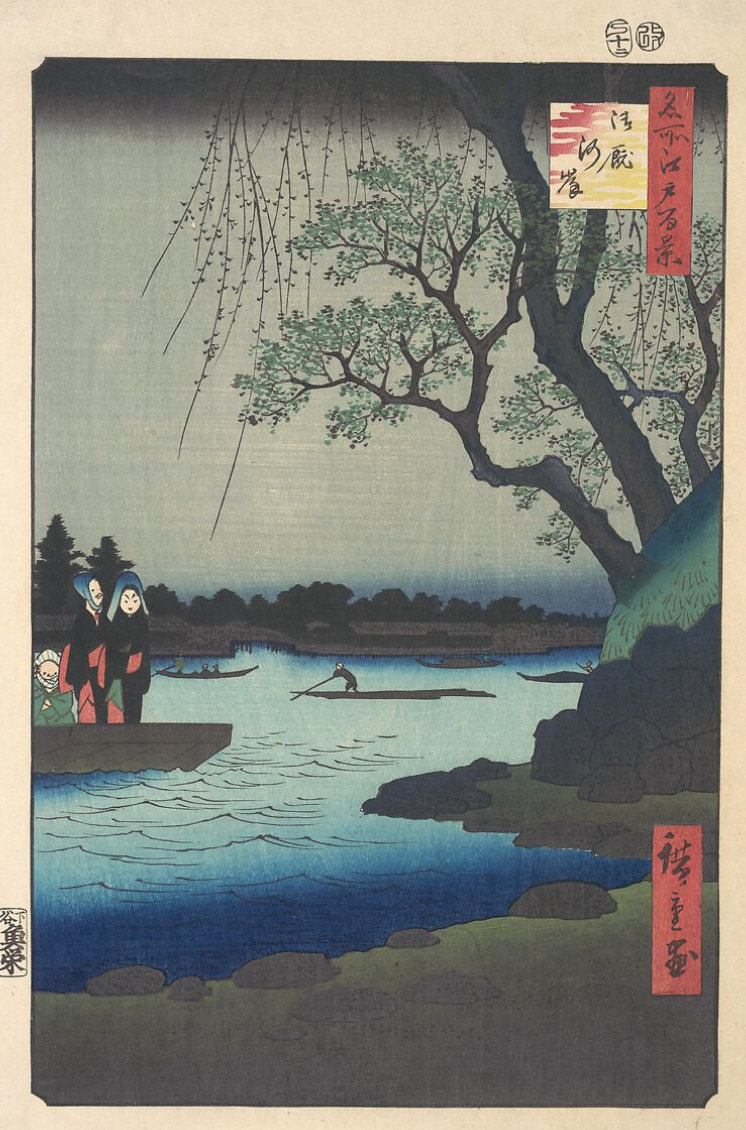
The Oumayagashi ferry, seen in this Hokusai print, was a popular means of crossing the Sumida River at the center of Edo.
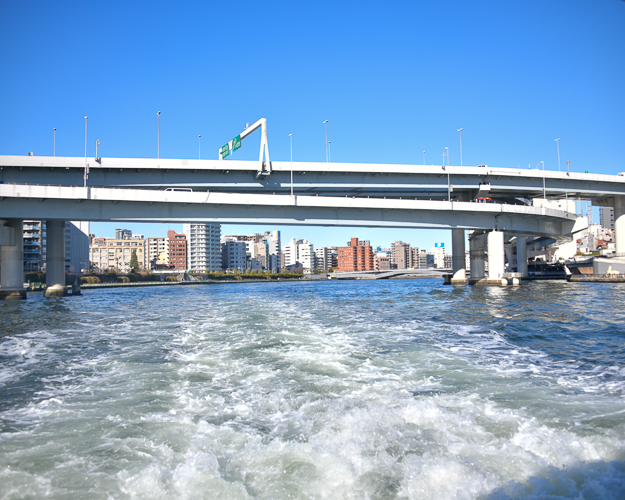
It is true that there are sad moments along the river where, for example, the freeway goes right across, and often alongside the river, but there is also such beauty along the river.
I had taken a boat from Asukasa to Hama-rikyu Gardens when I was here 25 years ago. I repeated the trip this time, and it is just as pleasurable today as it was then. There are 37 bridges that cross the Sumida River. The boat trip passes under a mere 12.
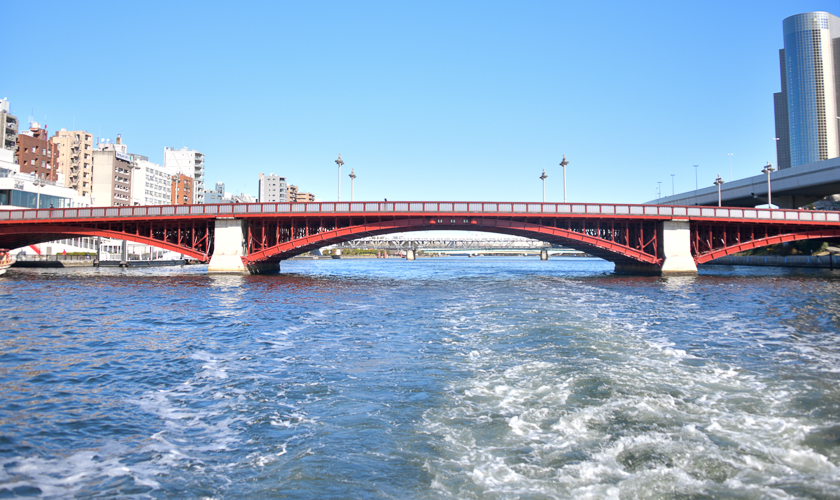
The trip begins at the Azumabashi Bridge. Originally built in 1774, the Azumabashi Bridge was once the point of departure for boat trips to the Yoshiwara pleasure district, north of Asakusa. It has gone through a number of iterations with this one being built in 1931.
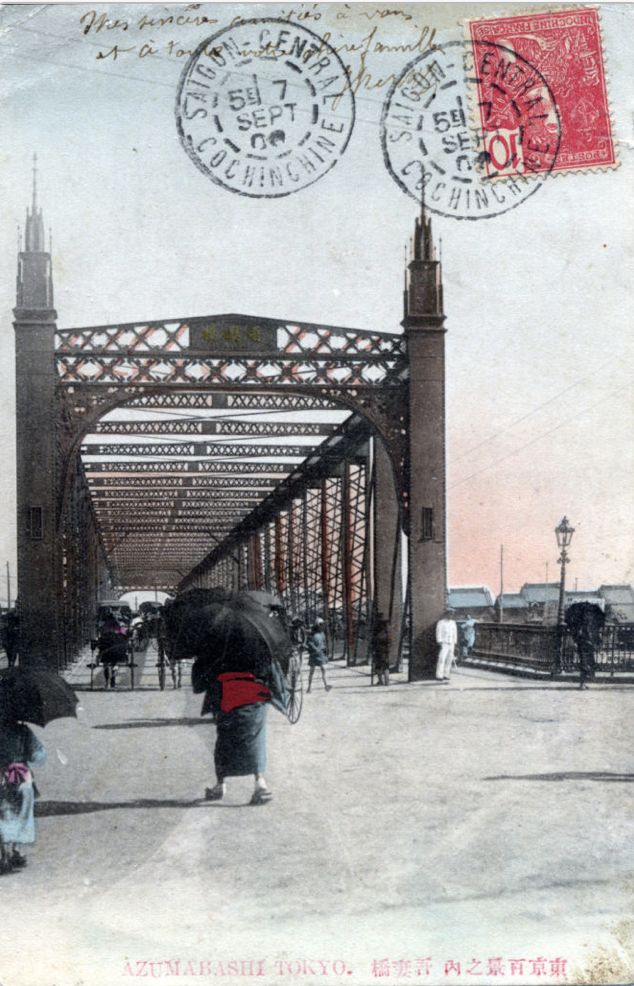
Azumabashi Bridge, Tokyo, c. 1910.
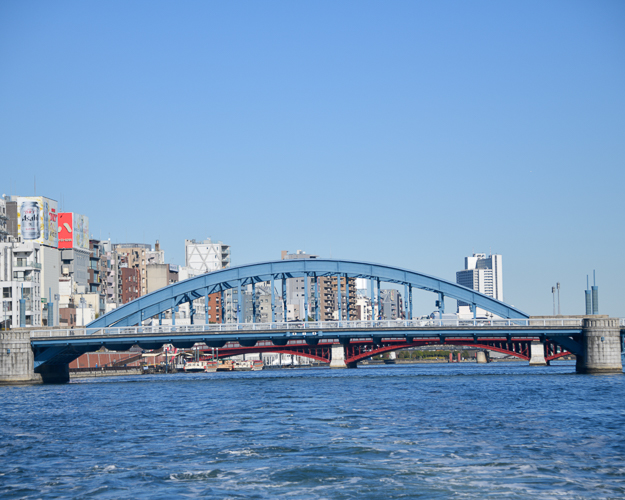
The Eitai Bridge
The Eitai was originally made of timber and was built in 1698. The bridge collapsed in 1807 and later during the 1923 Great Kanto Earthquake. It is now comprised of blue steel and girders.
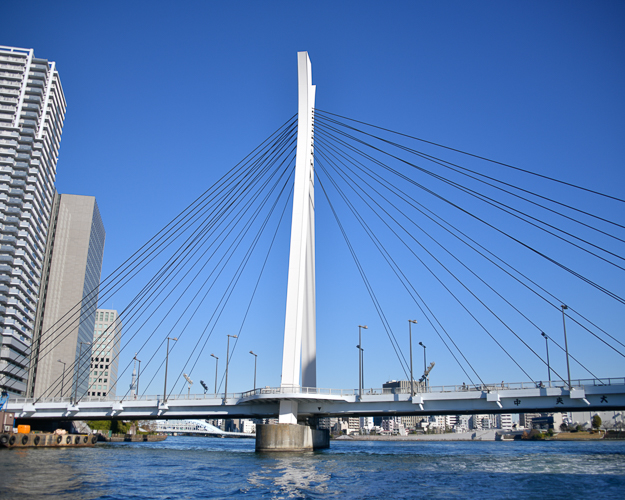
The Chuo Ohashi Bridge. Construction was completed on August 26, 1993.
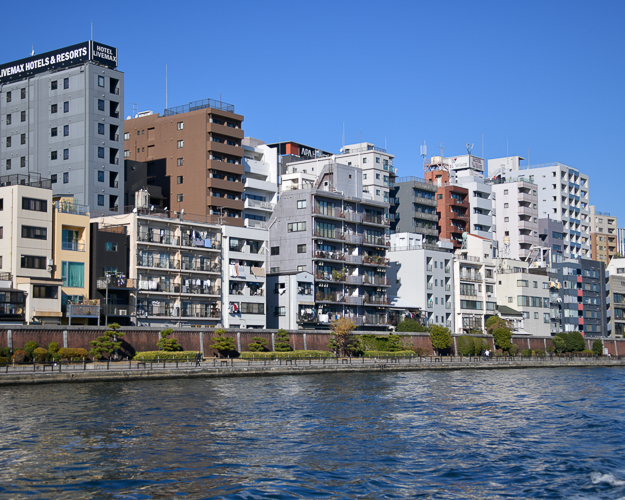
You can get a sense of the density of Tokyo when on the river in a way you don’t achieve while on the ground.
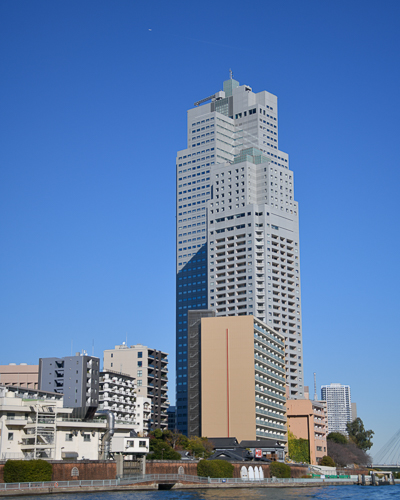
St. Luke’s Tower – the two tall buildings are connected by a sky bridge.
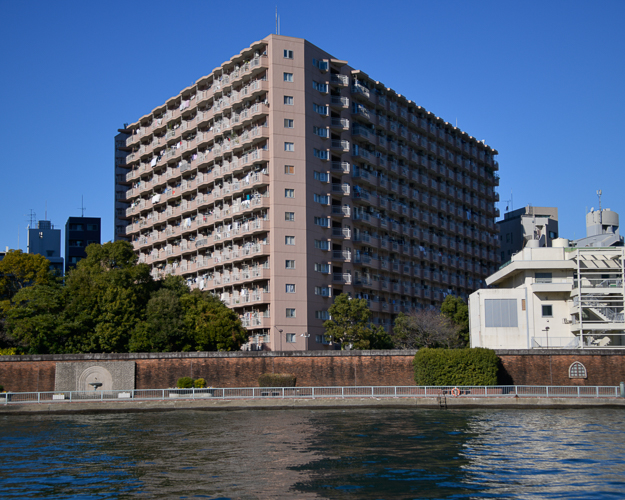
A 14-story, 478-unit apartment building. Almost every unit had laundry hanging out to dry.
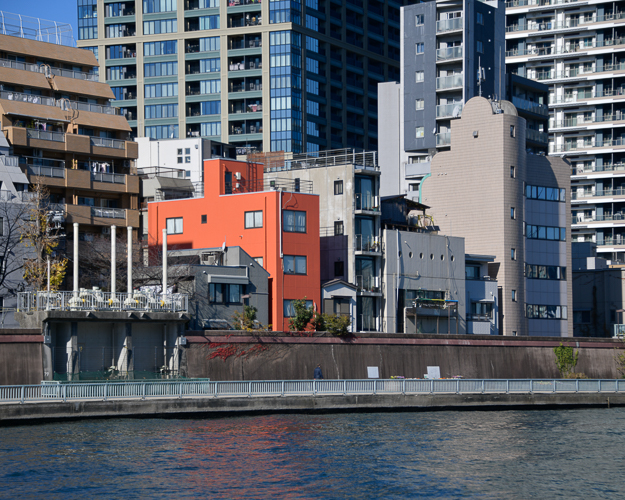
You see all types of architecture along the river
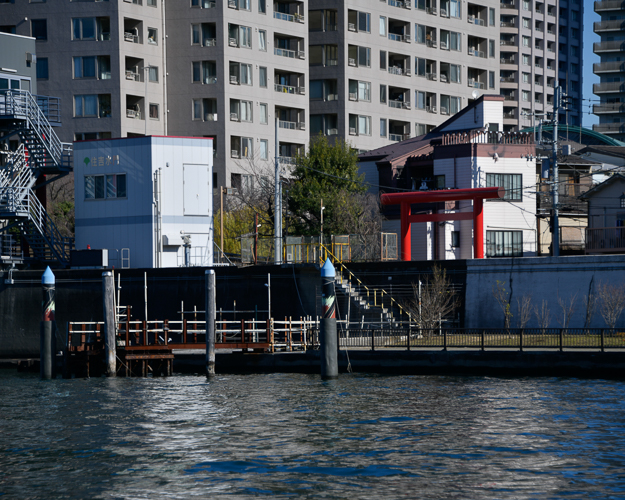
A Shinto shrine on the river
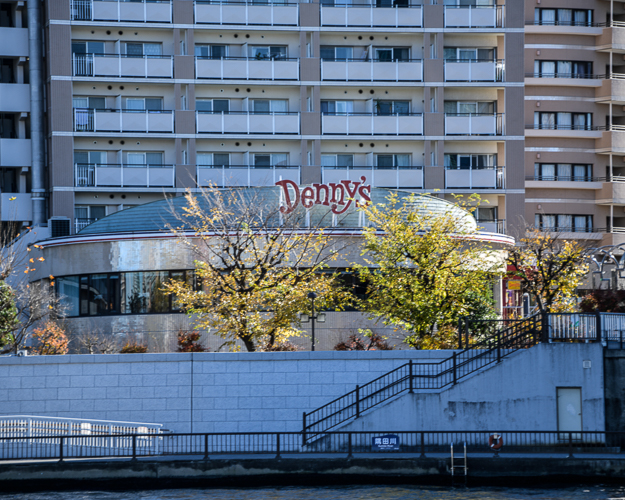
A Denny’s
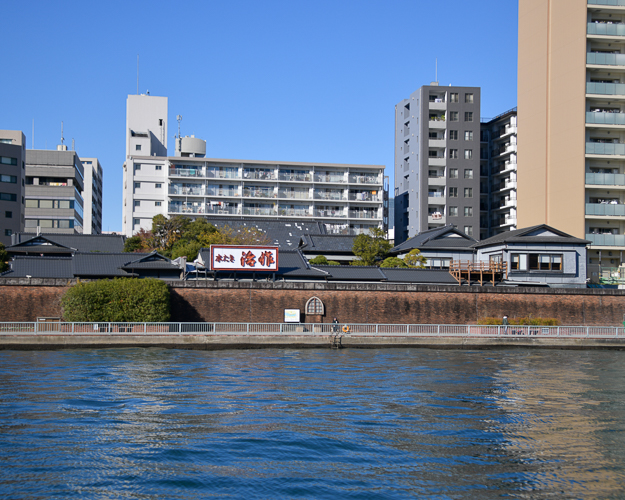
Behind that very long fence is Tsukiji Jisaku, a traditional Japanese restaurant that opened in 1931. The house was originally built in 1899 as a second house for the Iwasaki family, founders of the Mitsubishi conglomerate.

Hamamae River Sluice Gate
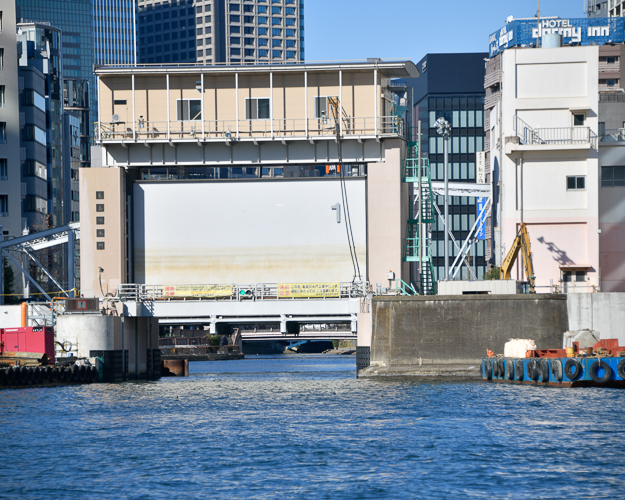
Kamejima River Sluice Gate
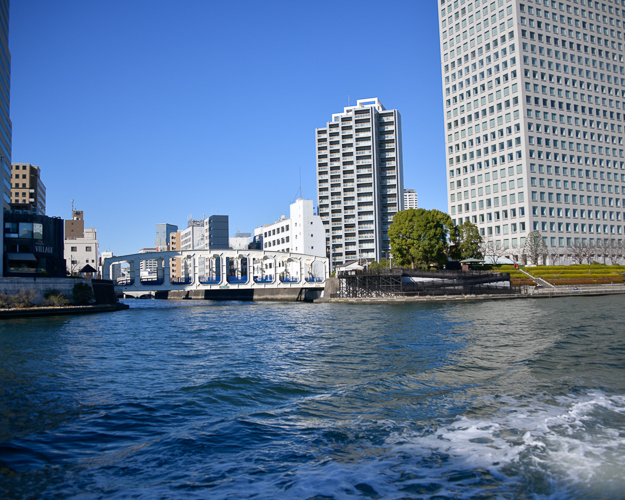
The Toyomi Bridge over the Nihonbashi River
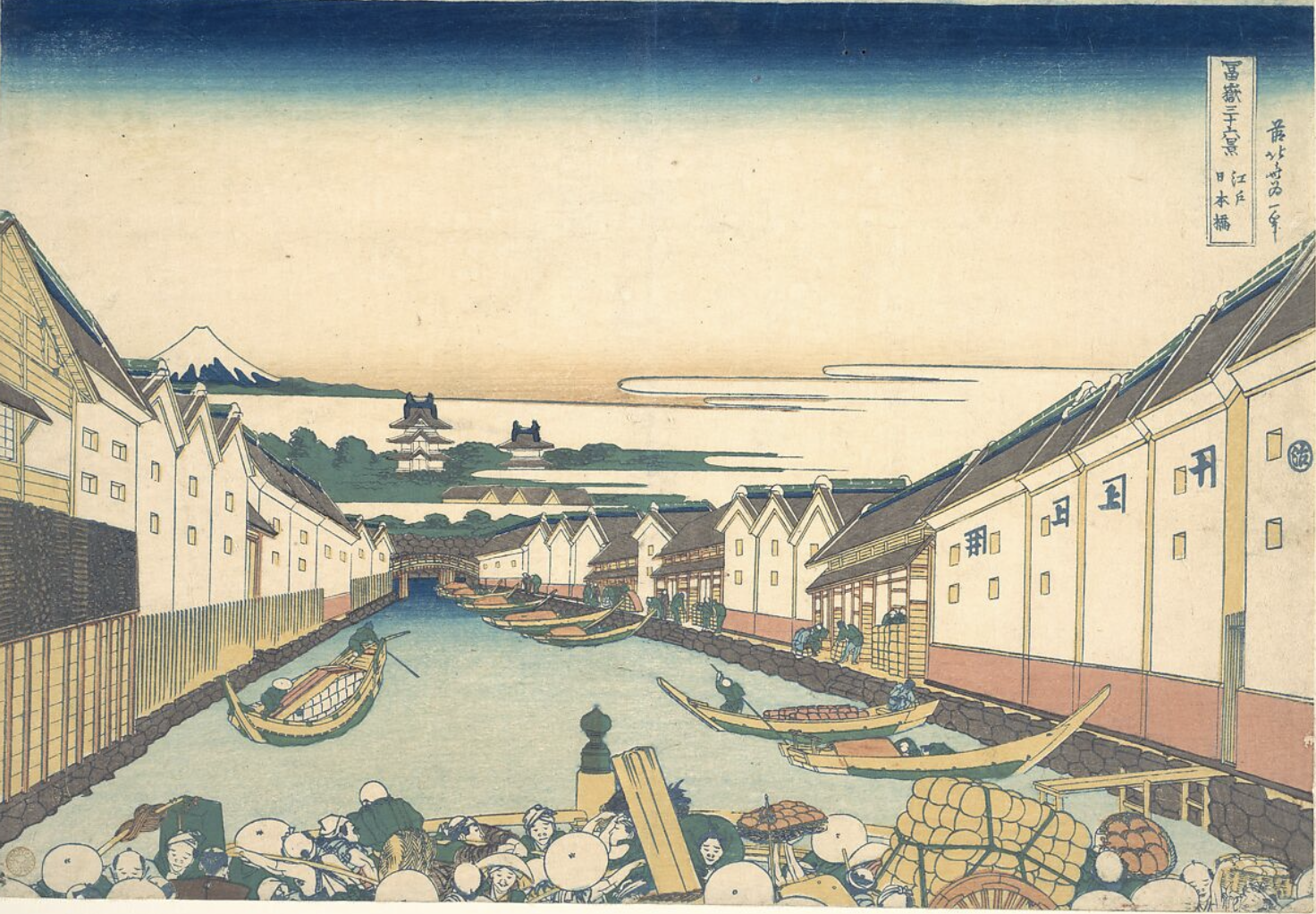
Nihonbashi in Edo (Edo Nihonbashi), from the series Thirty-six Views of Mount Fuji (Fugaku sanjūrokkei)
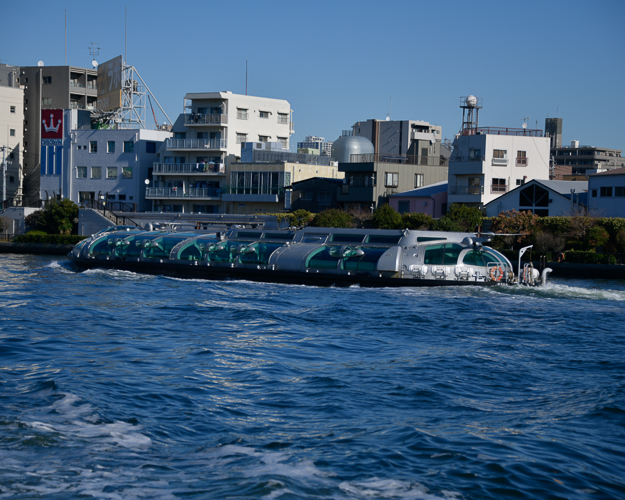
Among Tokyo Cruise’s water buses are the Himiko and the Hotaluna, designed by the mangaka Leiji Matsumoto, the creator of Space Battleship Yamato, Space Pirate Captain Harlock, and Galaxy Express 999.
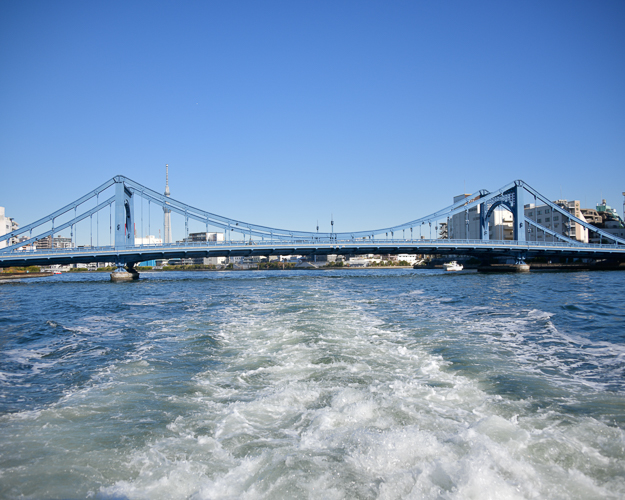
The Kiyosu Bridge was designated as a cultural asset of national importance, as it was the first self-anchored chain suspension bridge in Japan. The bridge was modeled after the Deutz Suspension Bridge in Cologne, Germany.

Rainbow Bridge
The Rainbow Bridge is a suspension bridge crossing northern Tokyo Bay between Shibaura Pier and the Odaiba waterfront. Completed in 1993, the name “Rainbow Bridge” was decided by the public. There are lamps placed on the wires supporting the bridge, which are illuminated in three different colors, red, white, and green, every night using solar energy.
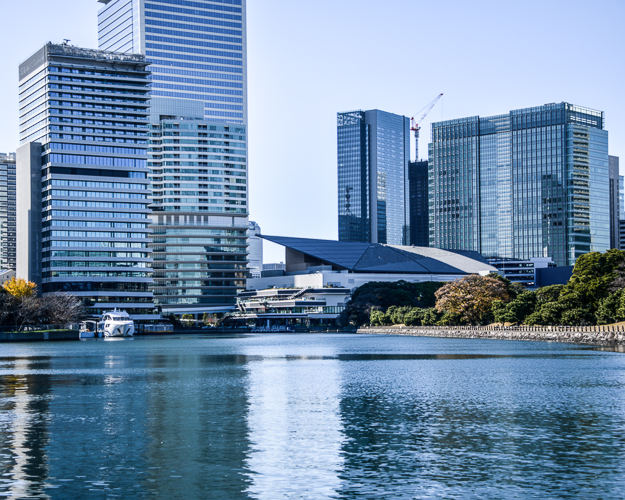
Waters Takeshita, a development of hotels, theaters, stores and restaurants
When you are going down the river, what strikes you is how big Tokyo is. When you are on the ground or in a bus, while Tokyo is high, you never get the feeling that it is as large as it actually is. The boat ride takes 40 minutes, and for the whole trip, you can see the Skytree, which is one of the harder concepts to grasp.
I can see the Skytree from the window of my hotel room as though it is just a few blocks away. They are just over one mile apart or a 30-minute walk. The boat trip starts a mere 1/2 mile from the Skytree. To travel 40 minutes by boat or 5 miles and still see it is mind-blowing. Yes, the Skytree is extremely tall, but it acts as a beacon, which helps give one perspective as to how far they can travel and still be in downtown Tokyo.
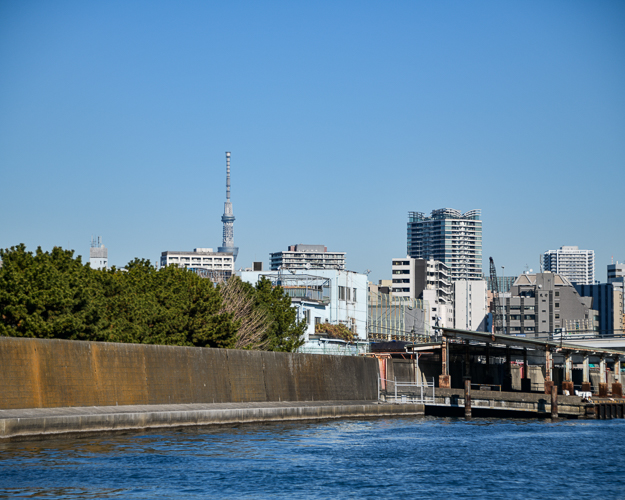
The Skytree from the landing area of Hama-Rikyu Gardens
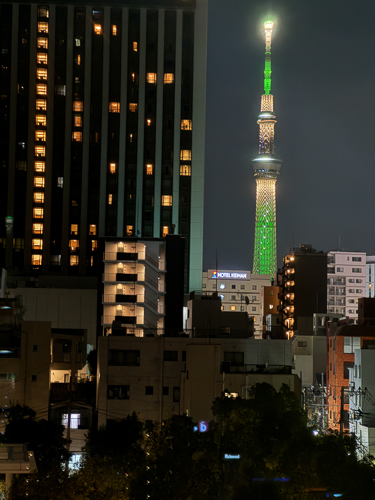
The Skytree from my hotel window